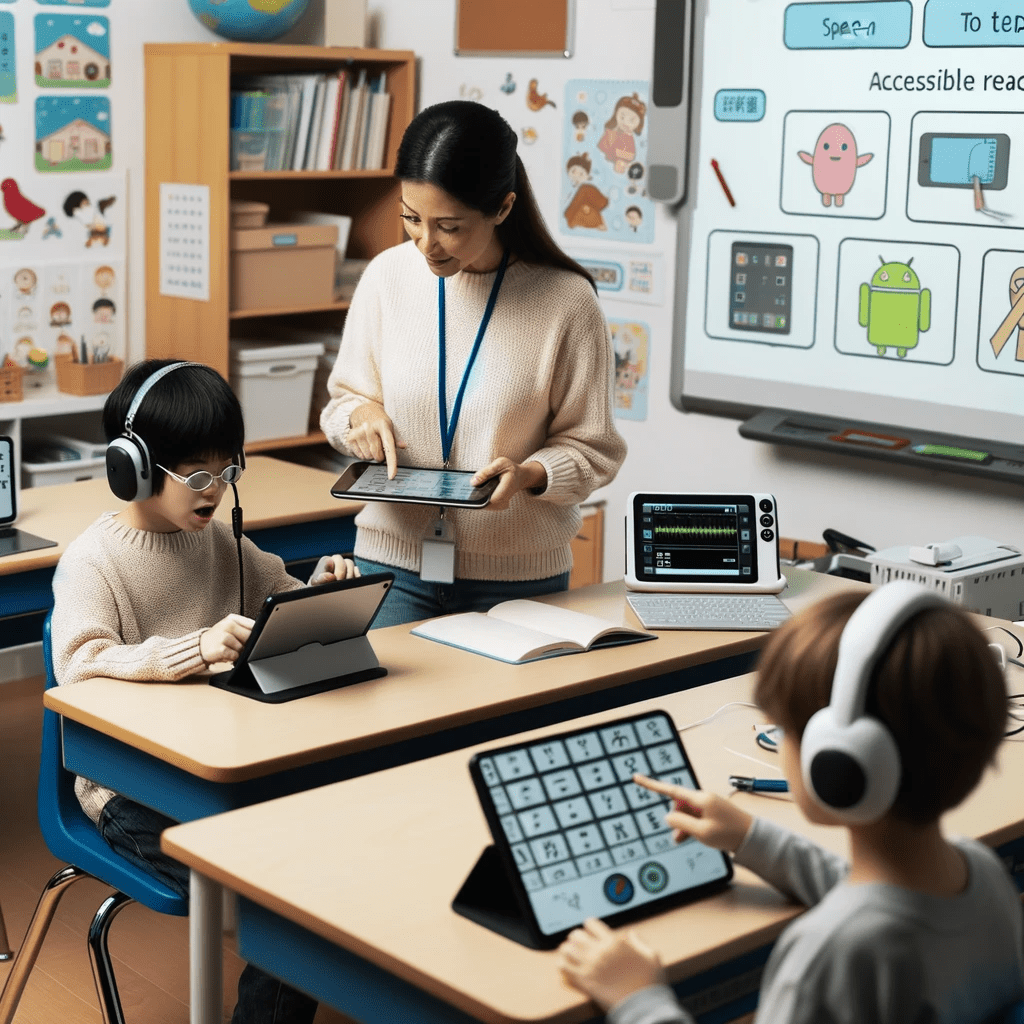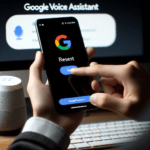Introduction to Assistive Technology
Assistive technology enables individuals with disabilities to participate more effectively in everyday activities. It includes a range of products, including adaptations to equipment, tools to help with daily tasks, and aids to communicate. People of all ages and abilities can benefit from assistive technology to improve their ability to live more independently and engage in activities they might not have been able to otherwise.
Assistive technology can help people overcome barriers and gain independence at school, at work, and in the community. Benefits of assistive technology can include improved communication, more independence in personal care and mobility, enhanced educational opportunities, and increased access to employment. Assistive technology also presents the potential for increased efficiency in the home and workplace, as well as improved quality of life for individuals that use it.

Definition and Types of Assistive Technology
Assistive technology is any device that is used to help with physical, cognitive or sensory impairments, allowing the user to maximize their independence and reach their full potential. It works by compensating for any deficiencies a person may have, allowing them to carry out activities they would not otherwise be able to do. This could range from communication devices for those with hearing impairments, to wheelchairs for those with mobility issues.
The benefits of assistive technology are vast. It can help with activities of daily living, like dressing, eating and bathing, provide mobility aids such as wheelchairs and walkers for those with mobility impairments, and assist in communication, such as speech generating devices and alternative and augmentative communication (AAC) systems.
It also provides employment opportunities for those with disabilities, and allows for educational advancement with accessible learning materials, assistive reading and writing tools, and more. Assistive technology provides more than just a physical change, it helps to create an environment of acceptance, inclusion, and opportunity, allowing those with disabilities to live fuller and more independent lives.
Historical Evolution of Assistive Technology
The assistive technology industry has come a long way since its conception. Initially, technologies developed to assist individuals with disabilities were limited to methods designed to enable physical access and promote independence. Personalized technology came into existence as a result of the advances in medical and technological research, designed to meet the specific needs of individuals with disabilities.
Today, assistive technologies have come a long way from the originals, with innovations like self-propelling and motorized wheelchairs, voice-activated controls, and motion sensors continuing to revolutionize the industry standard. Progress in medical technologies also lead to the introduction of prosthetic limbs, hearing aids, and reading devices into the market. Assistive technology has now become an important tool for providing independence and quality of life to individuals with disabilities.

Enhancing Independence
Assistance technology has been invaluable in helping individuals become more independent. Support planning and guidance can be provided with the help of technology enabling more secure and self-sufficient results. This may involve routine task assistance that allows individuals to do more with greater confidence and ease of access. Through the use of specific applications, devices, programs or interfaces, lifestyles can be improved, with individuals being enabled to take control of their life with the support of assistive technology.
In addition, assistive technology also promotes environmental changes that allow individuals to increase their independence and reach their goals more efficiently. Assistive technology can aid with mobility and environmental control to promote a greater level of independence. By promoting independence, assistive technology reduces the need for external support, ultimately enabling the user to achieve greater autonomy and self-reliance, while also having a positive impact on their well-being and quality of life.
EMPOWERING LIVES: THE TANGIBLE IMPACT OF ASSISTIVE TECHNOLOGY
| Benefit Category | Fact/Statistic | Source |
|---|---|---|
| Language Skills | Proper use of hearing aids by young children leads to improved language skills. | World Health Organization (WHO) |
| Access to Education and Employment | Manual wheelchairs increase access to education and employment while reducing healthcare costs. | World Health Organization (WHO) |
| Cost Reduction | Quality-assured, safe, and affordable assistive products reduce health and welfare costs, like recurrent hospital admissions. | UN News |
| Growing Need | Over 3.5 billion people are expected to need assistive products by 2050, with large gaps in service provision. | World Health Organization (WHO) |
| Technology Growth | Filings in emerging assistive technology have grown three times faster with a 17% average annual growth rate from 2013-2017. | WIPO |
| Population Need | More than 2.5 billion people need one or more assistive products, like wheelchairs or hearing aids. | World Health Organization (WHO) |
| 24-hour Support | Technology provides 24-hour support and emergency response, crucial during the COVID-19 pandemic for remote care delivery. | Med-Tech Innovation |
| Remote Health Monitoring | During COVID-19, remote health monitoring enabled high quality care continuation while limiting virus spread. | Med-Tech Innovation |
| Improved Health Outcomes | Technology-enabled care can provide predictive and preventative measures to improve and sustain health outcomes. | Med-Tech Innovation |
| Early Intervention | Remote health monitoring software allows for early intervention, expected to reduce hospital admissions and improve self-management. | Med-Tech Innovation |
Mobility Aids: Wheelchairs, Walkers, and Prosthetics
Assistive technology for mobility has dramatically changed over time. Wheelchairs, walkers, and prosthetics now provide individuals with disabilities more independence, privacy, and dignity. Wheelchairs are designed to provide comfortable seating while offering motorized or manual control. They have adjustable features to accommodate different body sizes and physical abilities. Walkers provide stability and support and are available in different sizes and weights. Prosthetics can improve gross motor skills and provide an increased sense of balance and coordination.
In addition to providing access to mobility, all of these assistive devices have also improved communication for individuals with disabilities. Wheelchairs, walkers, and prosthetics provide a more dignified way to get around, allowing individuals to engage more confidently with others. Improved communication also means improved levels of education, employment, and socialization. These devices can help provide individuals with disabilities an increased connection to the world around them.

Daily Living Aids: Eating, Dressing, and Bathing
Assistive technology has become an indispensable tool for those with disabilities. It provides immense value for money to provide convenience and improve daily tasks, particularly activities of daily living. Technology for eating, dressing and bathing helps individuals with disabilities achieve independence in everyday habits.
Eating aids come in a variety of assistive utensils and gripping aids to make handling food easier. These products also often come with adaptive cutlery for those who struggle to grip a utensil. Similarly, dressing and bathing aids are designed to assist those with reduced mobility to complete these activities to increased independence.
Digital isolation can be reduced by utilizing technology for eating, dressing and bathing. There are now products available that allow individuals to perform these activities in a safe and hygienic manner. This helps those with disabilities reduce their reliance on caregivers and improves their quality of life.
For example, a shower chair with an adjustable height feature would be extremely helpful for a user with limited mobility. Additionally, a robotic bathing chair can aid a user with limited arm and leg movement in bathing by using a variety of washing aids, such as jets, brushes and sprayers. Through the utilization of technology, individuals with disabilities can achieve greater independence.
BENEFITS OF ASSISTIVE TECHNOLOGY :Improving Communication
Communication is an essential part of life, especially for those with physical or cognitive disabilities. Assistive technology can help individuals express their thoughts, feelings, and needs in a safe and meaningful way. Tools such as speech-generating devices, augmentative and alternative communication systems, and other assisted communication devices can help individuals engage in meaningful activities and gain a sense of autonomy and independence. With the help of these technologies, individuals can interact safely with their environment, express their feelings, learn, and perform everyday activities.
Speech Generating Devices
Speech generating devices are powerful tools that have revolutionized the lives of those with mobility or communication challenges. These devices enable individuals to express themselves in a clear voice, allowing them to interact better with their peers and be included in social occasions that were otherwise off-limits to them. These devices also serve as safeguards against people being locked away in institutions, trapped inside their own minds, or isolated from other people because of their challenges.
The use of speech generating devices can range from simple user-friendly instruments to sophisticated devices that offer more in-depth features. Some speech devices come with pre-programmed messages and images on a touch-sensitive display and others require minimal programming and require a minimal level of physical capability. Commonly used speech generating devices often include battery operated machines crafted with protective casing, noise cancellation, adjustable tones, sound customization, and a variety of text-based features.
Alternative and Augmentative Communication (AAC) Systems
Alternative and Augmentative Communication (AAC) systems are designed to help a person with a communication disability express themselves more effectively. AAC systems are special tools that use symbols, pictures and letters to create words or sentences. These systems can be used in a variety of ways, such as a board with buttons, a computer program, or a voice-activated device.
AAC systems can also improve the person's communication abilities by providing feedback and guidance in structuring a sentence. Different types of AAC may also include devices to help with pronunciation or tuning-out of background noises. With the right AAC system, a person with limited verbal skills can explore more options for expressing their thoughts, which can increase their confidence and communication independence.
Educational Advancements
Assistive technology has enabled greater opportunities for individuals with disabilities in educational settings. Audio and visual tools such as laptops, tablets, and iPads can be used to facilitate greater accessibility for students with physical disabilities as well as those who have learning disabilities or difficulty with comprehension. Text to speech software, along with access to books and articles in an accessible digital format, can provide additional teaching and learning support.
In addition, applications that can track the progress of students with special needs and allow for personalized learning further support the ability of individuals to access educational activities. These applications can be used to identify areas of strength as well as areas that require more attention and adjustment in terms of educational materials and approaches. Assistive technology continues to make great strides to aid learners with special needs.

Accessible Learning Materials
Learning materials are an essential part of any educational environment. Assistive technology can enable students with disabilities to access attending, learning, and engaging with materials to the same degree as their peers. An example of this is screen readers, which are designed to read aloud digital text that would otherwise be inaccessible due to visual impairment.
Text to speech technologies can also be used to convert printed materials into speech, making them accessible to people with dyslexia, for instance. There are also a range of solutions to help students interact with educational materials that are designed for a visual, non-disabled audience. Switch access are one example, where a device is used to help someone with limited mobility from manually controlling a computer mouse.
Math aids such as talking calculators and magnifiers can also be used to help assist students with learning disabilities. All these technologies can enable disabled students to access learning materials with independence and confidence.
Benefits of Accessible Learning Materials:
- Enable students with disabilities to access learning materials to the same degree as their peers
- Screen readers can read aloud digital text that would otherwise be inaccessible due to visual impairment
- Text to speech technologies can convert printed materials into speech, making them accessible for people with dyslexia
- Switch access devices help those with limited mobility from manually controlling a computer mouse
- Talking calculators and magnifiers can assist students with learning disabilities
Assistive Reading and Writing Tools
Computer-Based Reading Tools are designed to improve the understanding of written materials for individuals with reading difficulties. These tools can highlight words and phrases, offer alternate word suggestions, read text aloud, and highlight as the text is read. Audio books, text-to-speech software, and speech recognition programs are also popular computer-based reading tools.
Writing tools can also help people with learning disabilities or language barriers. Word prediction software can suggest words to speed up the writing process, while speech recognition programs make the writing process hands-free. Spell checkers, grammar checkers, and word banks can help to improve accuracy and aid in the writing process. There are also tools that allow a user to zoom in on text, change font size or type, and alter the background color, which can improve visual accessibility.
Employment Opportunities
Assistive technology provides a wide range of support for those pursuing employment. Many individuals with physical, cognitive, or sensory disabilities have access to tools that enable them to perform roles they may not otherwise be able to. For example, a wheelchair user or those with mobility issues have access to a variety of specialized chairs and devices that can help them get around the workplace. Technologies like screen-readers also help people with visual impairments access information and materials, allowing them to participate in job applications and processes.
Another area where assistive technology has made a major impact is in the communication space. Technology like mobile applications, text-to-speech devices, and assistive hearing devices help those with speech impairments, autism, and auditory processing disorder communicate effectively with their colleagues. This helps make the workplace more inclusive and allows individuals with disabilities to have equal access to employment.

What is Assistive Technology?
Assistive technology is an umbrella term which refers to any type of device, software, or tool that is used to help individuals with disabilities live more independently and participate more fully in society.
What are the different types of Assistive Technology?
There are many types of Assistive Technology, including mobility aids such as wheelchairs, walkers, and prosthetics; daily living aids such as eating, dressing, and bathing aids; and communication tools such as speech generating devices, alternative and augmentative communication systems, and assistive reading and writing tools.
How does Assistive Technology help enhance independence?
Assistive technology can help individuals with disabilities live more independently by providing the necessary tools to complete daily activities. For example, mobility aids can help those with physical disabilities move around more easily, while daily living aids can help with tasks such as eating, dressing, and bathing.
How does Assistive Technology improve communication?
Assistive technology can help individuals with communication disabilities by providing tools such as speech generating devices and alternative and augmentative communication (AAC) systems. These tools can help individuals with communication challenges to communicate more effectively with others.
What are the educational advancements made possible by Assistive Technology?
Assistive technology has enabled many educational advancements, such as the use of accessible learning materials, assistive reading and writing tools, and speech generating devices. These tools can help individuals with communication and learning disabilities access educational materials and participate in learning activities.
What are the employment opportunities for individuals with disabilities who use Assistive Technology?
Assistive technology can help individuals with disabilities gain access to employment opportunities. For example, mobility aids can help those with physical disabilities gain access to work sites, while daily living aids can help with tasks such as job interviewing or completing paperwork. Additionally, communication tools such as speech generating devices can help those with communication disabilities better interact with potential employers or colleagues.





Pingback: Augmented Reality in Interior Design: 10 Groundbreaking Approaches Reshaping the Future - techlooters.com